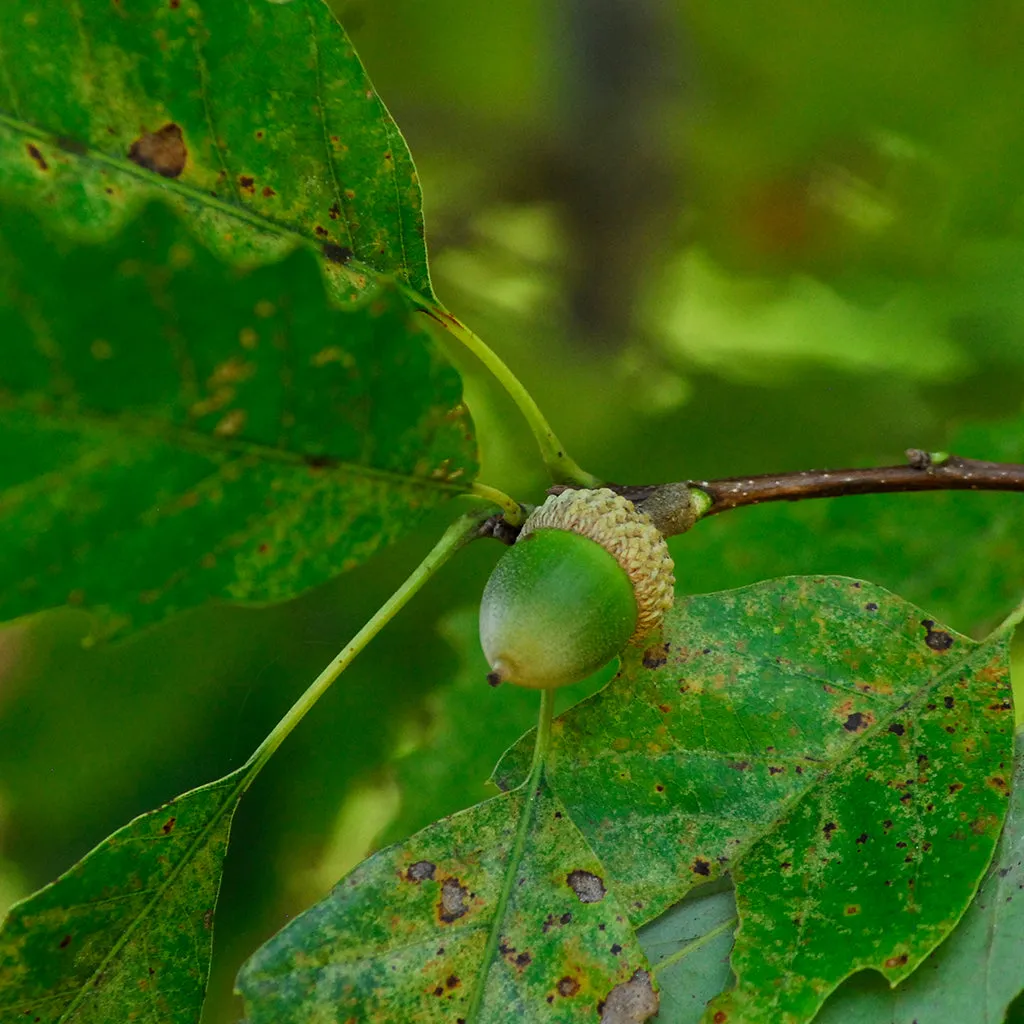We like to call chinkapin oaks “mule” oaks, mainly to help us remember the scientific name, but also referring to their hardy nature and tolerance of the poorest of sites. Everything about this species is tough, except their acorns, which are considered a delicacy to wildlife. Just ask the mice at our nursery, who have an uncanny knack for singling them out amongst our huge inventory of acorns in storage. We now have to over-winter our chinkapin oak acorns in mouse-proof containers. Did someone say chinkapin oak was a slow grower? We planted a few ten inch seedlings last June, and they were between five and six feet before the first frost!! Think of our chinkapin oaks as candy-corn feeder set to go off for two weeks straight, beginning in late October.
| Type: Zone: | White Oak section 4 - 8 |
| Soil pH: | 4.5 – 7.2 |
| Mature Height: | 80’-110’ |
| Wildlife Value: | Wild turkey, deer, black bear, squirrels, and a variety of ducks. |
| Site Preference: | Common on limestone and calcareous soils in mixed deciduous and pine forests, but performs better when established on higher quality sites. Also tolerant and thrives on acid soil types. |
| Nut Maturity Date: | October to November |
| Alias: | Chestnut Oak, Yellow Chestnut Oak, Yellow Oak, Rock Chestnut Oak |













